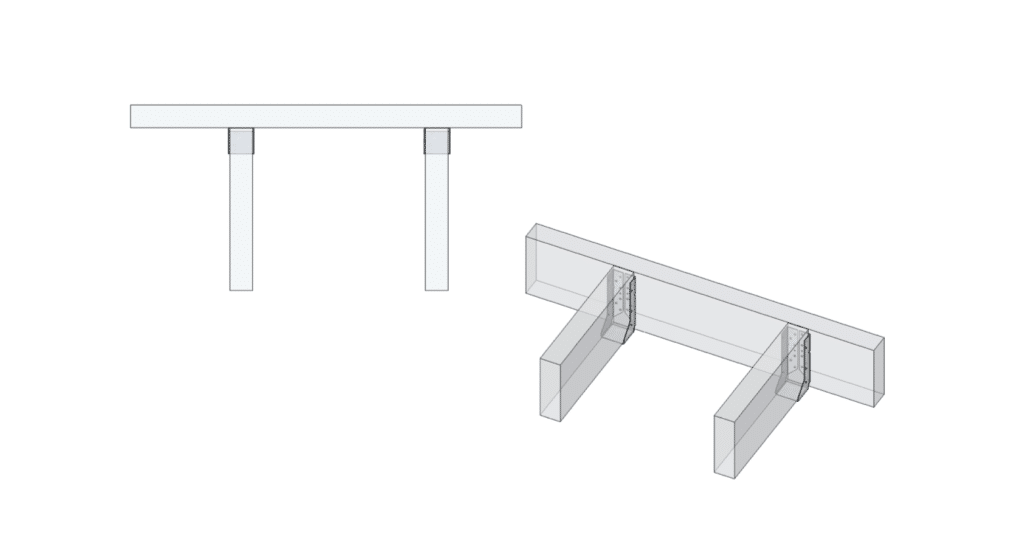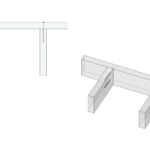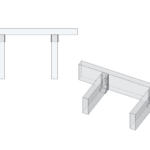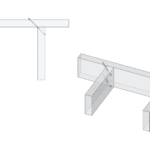Joist connection for deck framing
Joist connection for deck framing
The best advice for fixing joists as a decking frame is based on many years of what works and what doesn’t. The other advice is based on timber science and industry standard timber connection and what is and what isn’t acceptable.
It is vital to the success of any decking structure that the beams and joists perform in a way that they will support the load required. For this to translate into a decking frame the standard or industry accepted load is 1.5kN per sq m. This loading is only proven if the timber connections are correct and with the correct fixings.
How to connect a joist to a beam
The simplest method to connect a 150 x 47mm joist is to mechanically fix the joist perpendicular to the beam. This is where the joist abuts a beam at 90°. This provides a well-balanced, secure and connection. It will be fit for purpose and will perform well for the service life of the frame.

The most appropriate fixings are approximately 150mm in length and have a diameter of 6.5mm. These fixings must be appropriate for exterior use and have the appropriate data sheets to prove performance and warranty.
Awkward timber connections and how to overcome them
There are many situations where it isn’t possible to connect timber in a standard fashion. This may be where the beam is abutting a wall or other fixed object and impossible to get a fixing through the beam into the joist.Joist connection for deck framing

This is where you may find a fixing bracket, usually called a Joist Hanger, more than useful. These are a requirement from certain decking manufacturers. Joist Hangers provide the perfect mechanical fixing between the beam and the joist. They are available in many dimensions and at different angles. These brackets are quick to install and inexpensive so there is no sensible reason to not use them. If your joist is at an angle to the beam there are adjustable joist hangers available. There area also preset angles joist hangers.
How not to fix a joist to a beam
There are many applications in a decking structure where the framework maybe in an awkward position or shape. Consideration has to be directed to the connection of the timber and without such your frame may fail. If the timber connection is not secure and even with the correct fixings it may still fail. It may fail because your fixing is placed in a position where it may not have the required holding force to mechanically secure the two timber section together.

Where there is an angled cut at the end of the joist and a fixing is forced through the side of the joist The fixing is shown here at 45° and as a result is pinching the end of the joist and is only holding the last 30-40mm of timber at an angle. In this situation the timber being from 30mm or so and cut at an angle there is a reduced amount of timber for the fixing to hold. The other issues are that the 6.5mm fixings is likely to split or weaken the timber at this thin wedge shaped end. Then even if it doesn’t split straight away it will over time as the timber will expand and contract and with little to hold it in place it will certainly fail
Joist connection for deck framing is vital to the success of the loading and longevity of your decking investment.






